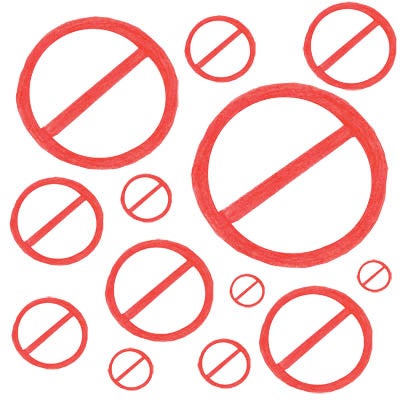Google is adding a new tool to its suite of advertiser controls that aims to make it easier for ad buyers to dynamically block sites and domains that don’t meet their brand safety standards.
These dynamic exclusion lists, announced on Thursday, will be available to all Google Ads users “within the coming weeks,” which is every large technology company’s code phrase for “soon-ish.”
Google advertisers can already exclude specific sites, content and entire topics from their campaigns, but there hasn’t been an easy way to manage static blocklists without manual curation.
Even though most advertisers know in a general sort of way the types of content and even some of the URLs to incendiary sites they want to avoid, there are others sites they’re not aware of that aren’t a fit for their brand but don’t violate Google’s publisher policies.
Staying on top of it is a big job even for the largest advertisers, let alone smaller advertisers that just don’t have the bandwidth, in-house expertise or resources to regularly monitor and update exclusions.
Google developed dynamic exclusion lists after receiving that feedback last year, said Alejandro Borgia, director of ads privacy and safety at Google.
“Dynamic exclusion lists will help advertisers more easily and efficiently control where their ads are shown online,” he said, “and more easily leverage the help and expertise of third-party organizations to protect their brands if they choose to do so.”
Once a dynamic exclusion list has been uploaded to aGoogle Ads account, the advertiser can schedule updates so that new domains and web pages can be added automatically over time.
Each account can have up to 20 shared exclusion lists with tens of thousands of URLs and domains per list.
Advertisers can either create the seed lists themselves or upload ones developed by a trusted third party, like an industry trade group or a brand safety organization (think IAB Tech Lab or the Brand Safety Institute).
Although Google is not launching this feature in partnership with any specific industry org, “we do regularly engage with advertising and industry associations, brand safety groups and advocacy organizations, and will make them aware of this new feature,” Borgia said.
Google has been working over the past year to enhance its ad enforcement capabilities and update its publisher policies to address new threats as they emerge, such as pandemic-related misinformation and disinformation, he said.
But the struggle against COVID-19 falsehoods and anti-vaccine content, both from a brand safety and a monetization perspective, is ongoing.
A study released by Israeli startup AdVerif.AI last month that examined monetization on 1,000 dubious websites between January and February found that Google’s ad buying tools were responsible for 69% of ads placed in stories making false claims about COVID-19.














